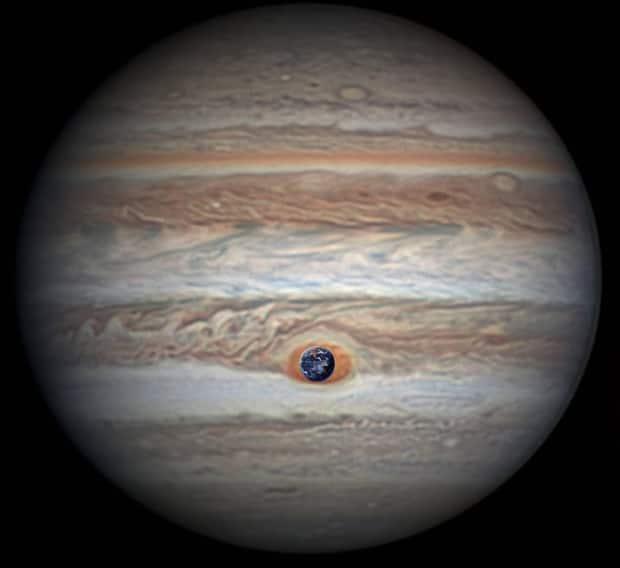Astronomers discover huge exoplanet has the density of cotton candy
Roughly 212 light years away in the Virgo constellation lies a super-large exoplanet that has astronomers revising their theory of how giant gas planets form.
The exoplanet, called WASP-107b, was discovered in 2017. At the time, it was difficult to accurately pinpoint its mass. But what astronomers did know is that it was already unusual.
It is a particularly large planet, roughly the size of Jupiter, but with an orbit that is just a mere nine million kilometres away from its host star, WASP-107, which is estimated to be about three billion years old.
To put that in perspective, Mercury, the closest planet to our sun, sits at 60 million kilometres. One year on WASP-107b takes roughly 5.7 days.
However, now, after years of observations using the W.M. Keck Observatory in Hawaii, a team of international astronomers have uncovered something else: WASP-107b is oddly light. In fact, it's much lighter than what was thought was needed to build gas giants such as Saturn and Jupiter.
"What was really surprising about this planet is that people have known … that it's about the size of Jupiter, so it's a gas giant," said Eve Lee, co-author of the study published in the Astrophysical Journal and an assistant professor in the department of physics at McGill University and McGill Space Institute in Montreal. "So if it's a gas giant, then the usual expectation is that it would weigh just as [much] as gas giants. Except it didn't."

Jupiter is about 300 times the mass of Earth. But WASP-107b — while roughly the same size as our solar system's biggest and most massive planet — is only 30 times that of Earth. That's 1/10th the mass.
The international team of astronomers inferred from their observations that the core of the planet was just four times that of Earth. But in theory, it was believed that these giant planets with such a gaseous atmosphere would require a core that was at least 10 times that of Earth's.
After a star forms, the remaining gas and dust — called a protoplanetary disk — come together to build planets. When it comes to the gas giants, it's believed that a core that is 10 times more massive than Earth's is required to build — or accrete — and hold on to the gas envelopes.
![S. Andrews [Harvard-Smithsonian CfA]; B. Saxton [NRAO/AUI/NSF]; ALMA [ESO/NAOJ/NRAO]](https://s.yimg.com/ny/api/res/1.2/i0dr9iK8RieFoO_IalHHQw--/YXBwaWQ9aGlnaGxhbmRlcjt3PTk2MDtoPTk2MA--/https://media.zenfs.com/en/cbc.ca/d0ab36f6a4c16b86ed4dd0539930638a)
So what's the deal with WASP-107b?
Lead author Caroline Piaulet of the Université de Montréal said there are two key elements in the theory of how this might have happened.
First, it's believed that WASP-107b formed much farther out from its current location, likely around one astronomical unit, or the average distance between the sun and Earth, roughly 150 million kilometres. There, it began to accrete gas and dust relatively quickly.
Secondly, it began to cool rather quickly.
"When it cools down efficiently, it's able to accrete efficiently because if it cools down, it's going to shrink," said Piaulet. "So it's going to have more space to accrete more gas."
Eventually, the planet migrated inward to its current position.
Yet another surprise
WASP-107b isn't the only "super puff" planet, as they are often called. Lee said there are four others known, though WASP-107b is the puffiest.
So just how puffy is it?
"It's usually compared to cotton candy, because it's about the right density," Lee said. "But it's not the kind that you find at carnivals. It's more like the kind that you buy at stores."
And, as surprising as this super-puff planet was, there was yet another surprise in store: a second planet orbiting the star, WASP-107c.
The planet was detected because of the longer observation time and was found to be roughly one-third the mass of Jupiter. Its orbit around the star takes about three years, significantly longer than WASP-107b.
The discovery is just a reminder that, while we may think we have an understanding of how planets form, we still have a lot to learn about what lies beyond our own solar system. Even then, Piaulet said, we still don't even know much about the cores of our own giant gas planets, such as Jupiter.
"What I found really exciting is that it's kind of pushing our understanding of planet formation to its limits."

